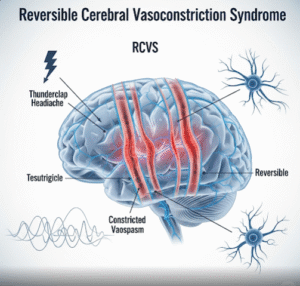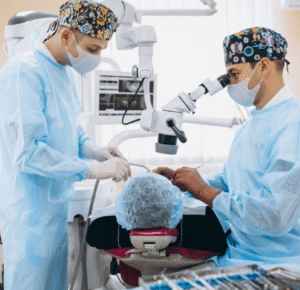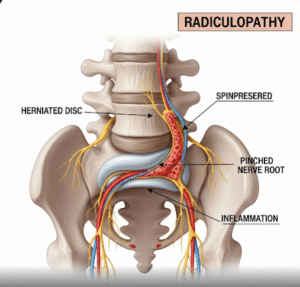Overview
Obstructed defecation is a type of chronic constipation where a person has difficulty passing stool despite the urge to defecate. This condition is usually caused by mechanical or functional issues within the pelvic floor or rectum, rather than a lack of fiber or slow bowel movement. It is most common in women, especially those who have had multiple vaginal deliveries or pelvic surgeries.
Obstructed defecation can severely affect quality of life, causing pain, frustration, and embarrassment. Treatment typically involves a combination of dietary, behavioral, and sometimes surgical interventions.
What is Obstructed Defecation?
Obstructed defecation is a functional outlet obstruction—the stool reaches the rectum, but the body is unable to expel it effectively. It is a subcategory of chronic constipation, but differs from slow transit constipation, which is caused by reduced movement in the colon.
Common underlying issues include:
- Pelvic floor dysfunction (inability to relax pelvic muscles properly)
- Rectocele (bulging of the rectum into the vaginal wall)
- Rectal intussusception (telescoping of the rectum into itself)
- Anismus (paradoxical contraction of the anal muscles during straining)
This condition may also involve manual maneuvers (using fingers to assist defecation) and frequent, ineffective straining.
Symptoms
Symptoms can vary but often include:
- Sensation of incomplete evacuation
- Difficulty starting or maintaining bowel movements
- Excessive straining
- Frequent urge to defecate with little result
- Feeling of blockage in the rectum
- Need for digital manipulation (using fingers to aid evacuation)
- Bloating and abdominal discomfort
- Increased bathroom time
In some cases, symptoms overlap with those of irritable bowel syndrome (IBS) or pelvic organ prolapse.
Causes
The causes of obstructed defecation may be anatomical, functional, or behavioral:
Anatomical causes:
- Rectocele
- Rectal prolapse or intussusception
- Enterocele (small intestine pressing into rectum)
- Anal stricture or narrowing
Functional causes:
- Pelvic floor dyssynergia (poor coordination of muscles during defecation)
- Anismus
- Neuromuscular disorders
Contributing factors:
- Pregnancy and childbirth
- Pelvic surgery
- Chronic straining or ignoring the urge to defecate
- Aging and muscle weakening
Risk Factors
You may be more likely to develop obstructed defecation if you:
- Are female, especially with a history of vaginal deliveries
- Are over the age of 50
- Have a history of pelvic floor disorders or surgeries
- Frequently suppress the urge to defecate
- Suffer from neurological disorders (e.g., multiple sclerosis, spinal injuries)
- Have a low-fiber diet or chronic constipation history
Complications
If left untreated, obstructed defecation can result in:
- Hemorrhoids due to straining
- Anal fissures or pain
- Rectal prolapse
- Fecal impaction
- Urinary problems (due to shared pelvic anatomy)
- Psychological distress and social embarrassment
Chronic issues can impair quality of life and daily functioning.
Prevention
Preventive measures aim to maintain pelvic floor health and healthy bowel habits:
- High-fiber diet (fruits, vegetables, whole grains)
- Adequate water intake
- Regular physical activity
- Avoid prolonged straining on the toilet
- Prompt response to the urge to defecate
- Pelvic floor exercises (Kegels)
- Avoid excessive use of laxatives
Good bowel training and posture (e.g., using a footstool to elevate knees) can improve bowel mechanics.
Treatment Options in Korea
South Korea offers advanced diagnostic and treatment options for obstructed defecation through gastrointestinal, colorectal, and pelvic floor clinics.
1. Diagnosis
- Digital rectal exam
- Defecography (X-ray or MRI): Visualizes rectum during defecation
- Anorectal manometry: Measures muscle function and coordination
- Colonoscopy to rule out structural problems
- Balloon expulsion test: Evaluates ability to expel simulated stool
2. Conservative Treatment
- Dietary fiber and hydration
- Laxatives or stool softeners (temporary use)
- Biofeedback therapy: Teaches proper muscle coordination using sensors and visual feedback
- Pelvic floor physical therapy: Exercises to improve control and relaxation of muscles
- Behavioral training and toilet posture improvement
3. Medication
- Prokinetics for bowel movement stimulation
- Suppositories or enemas (short-term use only)
4. Surgical Treatment (in severe or anatomical cases)
- Rectocele repair
- STARR procedure (Stapled Transanal Rectal Resection)
- Rectopexy for rectal prolapse
- Botox injection for anismus (muscle overactivity)
Surgical interventions are considered after failure of conservative treatment and are tailored based on the underlying cause.
5. Specialized Clinics in Korea
Top hospitals with colorectal and pelvic floor expertise include:
- Asan Medical Center – Colorectal Surgery & GI Center
- Samsung Medical Center – Functional Bowel Clinic
- Severance Hospital (Yonsei University) – Pelvic Floor Disorder Unit
- Seoul National University Hospital – Gastrointestinal Division
- Cha Bundang Medical Center – Women’s Pelvic Floor Center
These institutions offer:
- Multidisciplinary care (gastroenterology, colorectal surgery, gynecology, urology)
- Advanced diagnostics (defecography, manometry)
- English-speaking services for international patients
- Customized treatment plans for each patient













